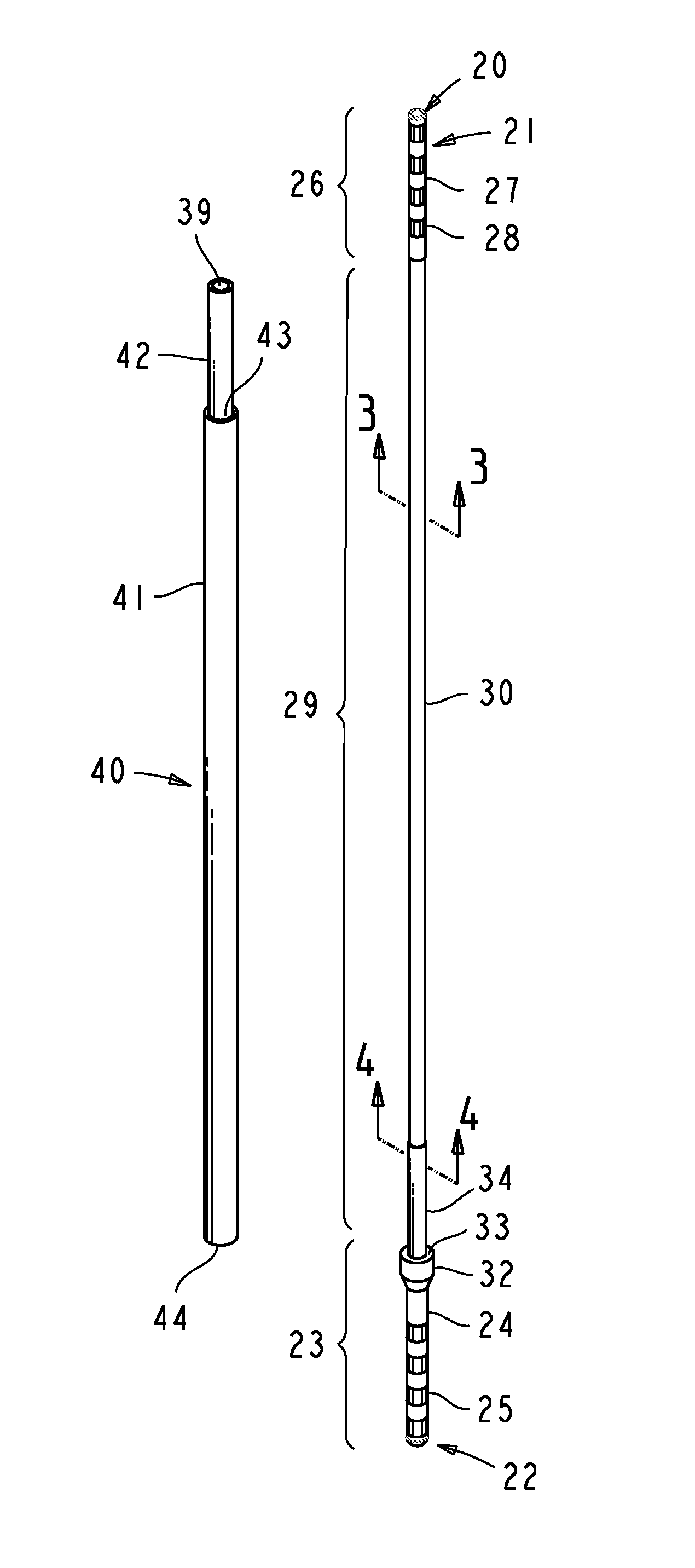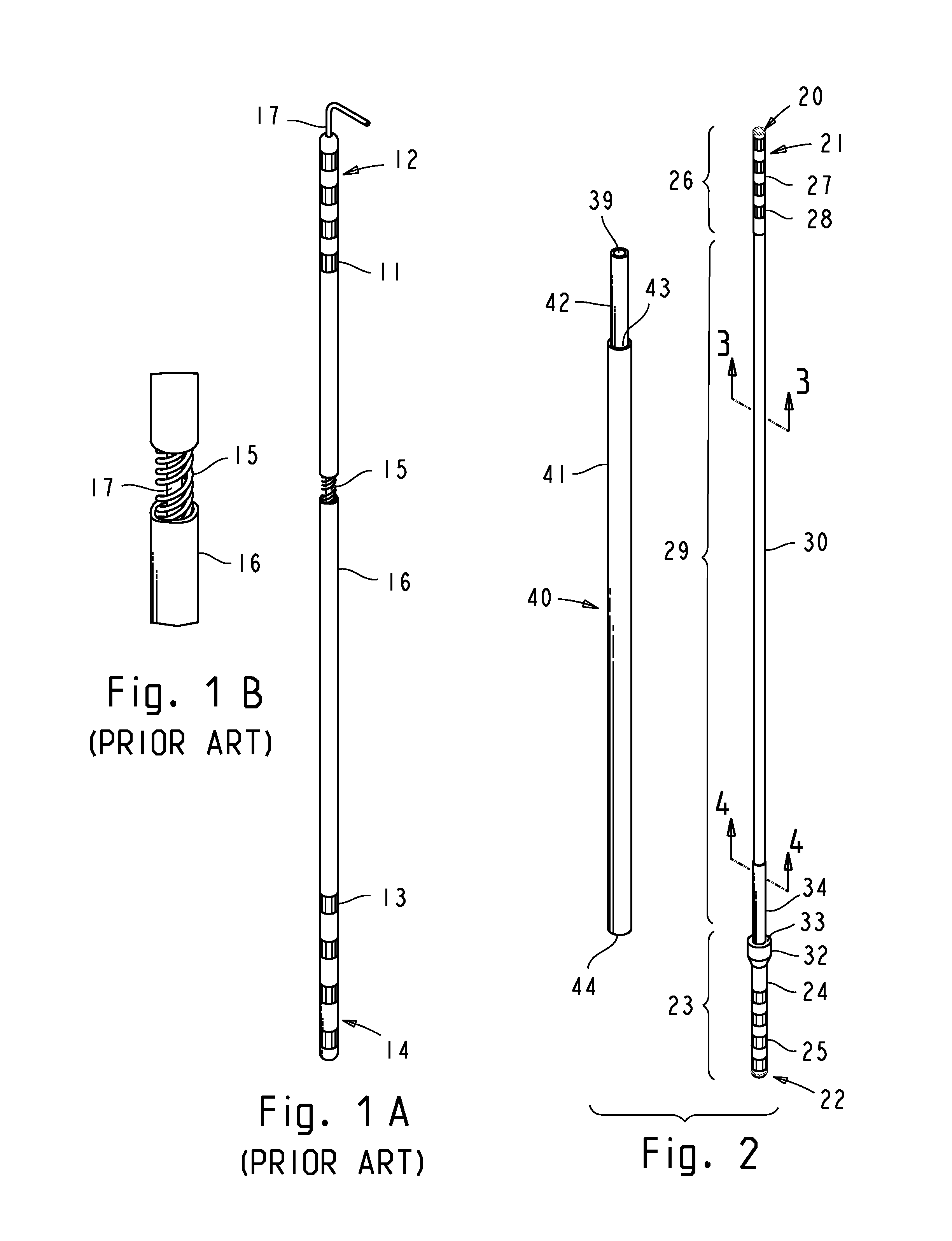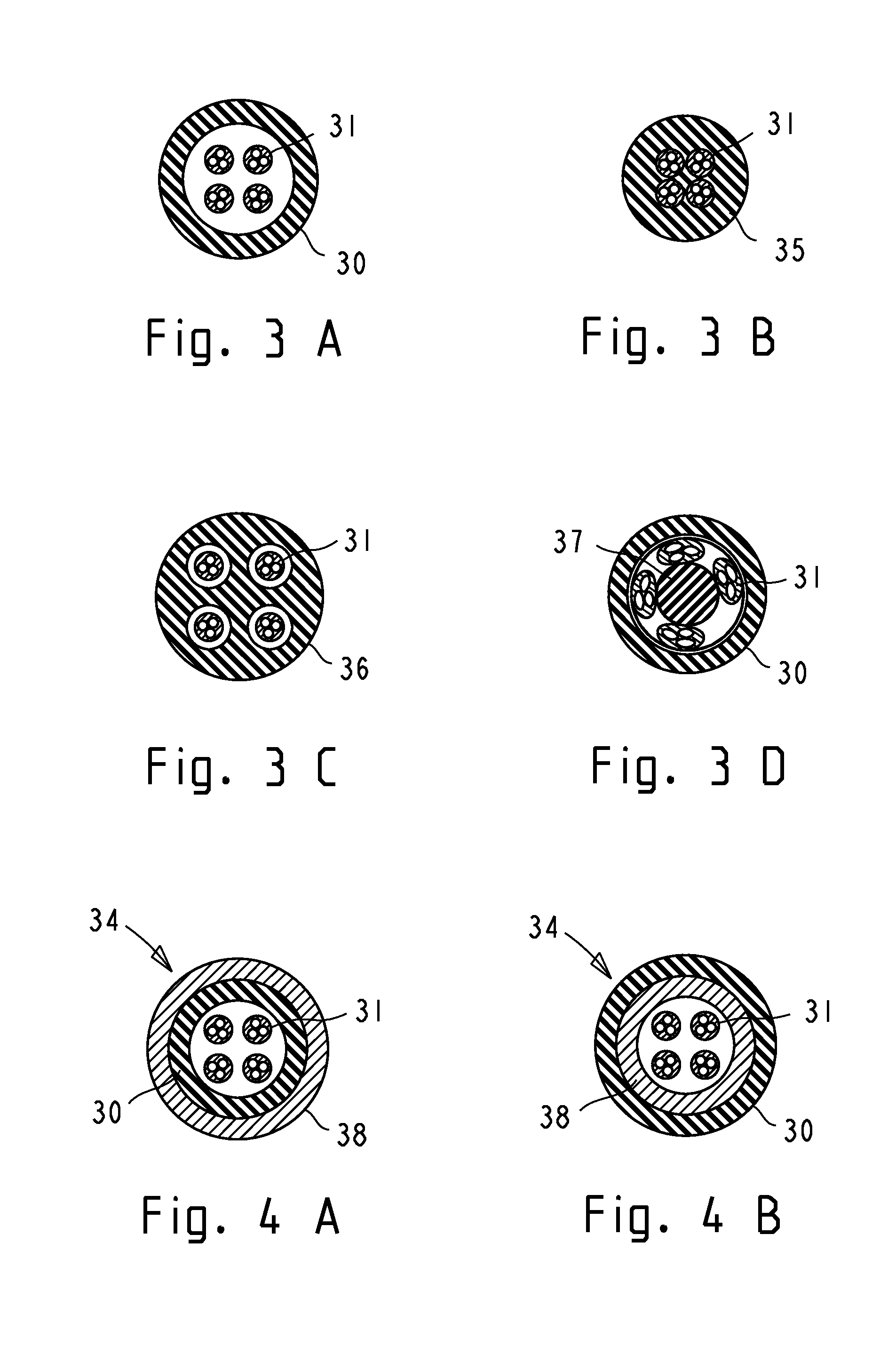Implantable lead and surgical accessories
a technology of surgical accessories and lead, applied in the field of implantable lead and surgical accessories, can solve the problems of increasing the risk of brain injury or hemorrhage, increasing the risk and expense of the procedure, and managing problems, and achieve the effect of eliminating the use of the brain-entry cannula
- Summary
- Abstract
- Description
- Claims
- Application Information
AI Technical Summary
Benefits of technology
Problems solved by technology
Method used
Image
Examples
Embodiment Construction
Glossary
[0085]In the ensuing description and claims, the following terms have the meanings indicated.[0086]“Lead” encompasses a stimulation lead, a sensing lead, or a combination thereof, intended for a chronic implantation.[0087]“Stylet assembly” encompasses stylets and accessories such as stylet spacers and handles, providing the requisite stiffness to the lead, and travelling with the lead, when the lead is advanced into the tissue.[0088]“Lead introduction” refers to the procedure of implanting the lead, including use of temporary electrode probes for physiological mapping of the target site and test stimulation required to verify electrode localization and to confirm a desired therapeutic effect.[0089]“Introduction tools” refers to the surgical tools, adapters, and accessories used to accomplish the lead introduction procedure.[0090]“Insertion trajectory” refers to a straight path through the tissue to the intended target, as defined by lead introduction tools.[0091]“Anatomical ...
PUM
 Login to View More
Login to View More Abstract
Description
Claims
Application Information
 Login to View More
Login to View More - R&D
- Intellectual Property
- Life Sciences
- Materials
- Tech Scout
- Unparalleled Data Quality
- Higher Quality Content
- 60% Fewer Hallucinations
Browse by: Latest US Patents, China's latest patents, Technical Efficacy Thesaurus, Application Domain, Technology Topic, Popular Technical Reports.
© 2025 PatSnap. All rights reserved.Legal|Privacy policy|Modern Slavery Act Transparency Statement|Sitemap|About US| Contact US: help@patsnap.com



